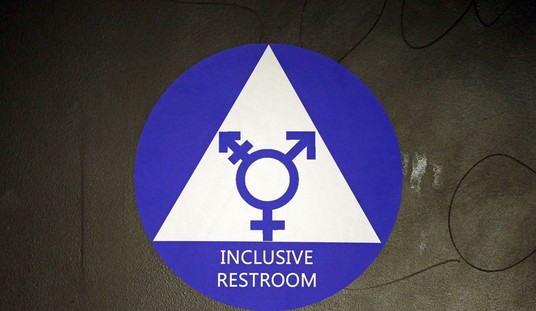GOP presidential candidate Mitt Romney has had his best week of the campaign. Going into the first debate last Wednesday, the Romney poll numbers both nationally and in key states had slightly improved from the nadir in the weeks following the release of the Florida fundraising tape with his “47% comment.” He trailed nationally by between 4 points (RCP average) and 6 points (Nate Silver’s model) entering the debate, and was behind in every key battleground state except North Carolina, which was even.
Today, he has pulled almost even in the RCP national poll average after a shocking poll from Pew put him into a 4 point lead over President Obama, and cut the lead in Nate Silver’s poll to 2.5%. Bettors on Intrade now give Romney a 37% chance of victory, double what it was a week ago.
The last time the Pew poll was conducted, Obama led by 8% — meaning there has been a 12% shift in the Pew results. Romney showed even larger gains among women voters in this survey, and he took a lead in the Midwest, home to many of the key battleground state races: Ohio, Iowa, Wisconsin, and now maybe Michigan. In Nate Silver’s’ fivethiryteight.com model, the Pew poll on its own lifted Romney’s chances of winning the White House by almost 4%.
Polls have been more volatile the last month than they were in 2008 at this stage. John McCain shot out to a brief lead in early September after the GOP convention, only to quickly fall 6 to 7 points behind after the financial crisis hit that month following the Lehman Brothers collapse and the Wall Street bailout bill making its way through Congress. McCain never made a dent into the lead after that.
This year, the GOP convention provided a much smaller bounce for Romney, which was wiped out by a larger lift to the Obama campaign from its convention — most of it due to a well-received nominating speech by Bill Clinton. Some of this convention bounce appeared to be fading when the 47% tape was released by the grandson of Jimmy Carter and Mother Jones magazine. Romney’s numbers nosedived, falling into the low 40s in some polls, and Obama opened up big leads in key states — particularly Ohio, a state that has been part of every winning GOP presidential campaign since the Republican Party was founded.
Now, following a smashing victory in the first debate (about three-quarters of those surveyed thought Romney won), he has closed the gap everywhere, and in some surveys moved into the lead in key states.
The vice presidential debate is on Thursday night, and while Joe Biden can be expected to be more engaged than Obama was last week, the Romney campaign is hopeful that the momentum it has gained this week can be carried forward with a strong performance by Ryan. The debate is likely to be livelier and nastier than the presidential debate, with more attacks by the vice president than were offered by Obama, who for the most part appeared to be coasting in the first debate.
The best news for Mitt Romney this week was in the state polls. Romney is narrowly ahead in the last two surveys in Florida. He is ahead in two of the last three surveys in Virginia. He is up 1 and down 1 in the last two surveys in Ohio. He is even or trailing very narrowly in Colorado and Nevada.
The biggest surprises are in Wisconsin, Michigan, and Pennsylvania. All three states seemed to have disappeared from Romney’s target map in September, with Obama moving up to double-digit leads in surveys in all three states. This week, two new polls showed Obama ahead by 3% in Michigan, two new polls showed him up 2% and 3% in Pennsylvania, and a new poll by Democratic-leaning pollster PPP had Obama up only 2% in Wisconsin.
In 2008, Obama won Michigan by 16%, Pennsylvania by 10%, and Wisconsin by 14%. It still seems like a bit of a long-shot for Romney to carry any of the three, but if he is close in these states, it would seem to confirm that his position has dramatically improved in states that were always on the target list such as Florida, Ohio, and Virginia — which Obama won by 3%, 5%, and 6% in 2008.
If in fact Wisconsin, Michigan, and Pennsylvania are in play, then an upset in one of them could make up for Romney falling short in one of the three primary target states of Florida, Virginia, and Ohio.
For much of the campaign, President Obama has outperformed in the swing states. In 2008, his margin of victory in the battleground states was about the same as in the national popular vote. This year, Obama has been doing better in the key battlegrounds than with his national numbers due to an early and aggressive negative ad campaign designed to define Mitt Romney for voters before he had the opportunity to do so himself.
Romney was characterized as a tax cheat and avoider, a man who hid his money offshore, and a ruthless capitalist to boot — outsourcing jobs and laying off workers, as well as being responsible for people losing their health insurance and then dying of cancer.
While many pundits assumed that the strong fundraising numbers for Romney and the RNC during the summer meant that Romney was matching Obama’s ad spending in the battleground states, this has not been the case. In Ohio, Obama has aired three times as many spots as Romney, and more than twice as many overall in all the key states. In 2008, Obama outspent McCain 5 to 1 down the stretch. This year has not been quite as high a ratio, but the heavy imbalance has remained. Arguably, the Obama ads have also been more effective in part due to their cavalier disregard for the truth.
President Obama has just capped off a very strong fundraising month in September, pulling in $184 million with the DNC. Romney has not released his fundraising for September, though it can be safely estimated his numbers will badly lag the president’s given the downbeat reporting on his campaign and its problems for most of the month.
The president may need that cash advantage down the stretch now that the battleground map seems to have expanded. To get to 270 Electoral College votes (269 may be enough if the GOP maintains its hold in the House), Romney needs to win North Carolina (15), where he now leads; Florida (29); Virginia (13), where he is about even; and Ohio (18), where he has moved closer. This gets Romney to 266. He would then need one more state — Colorado (9) or Iowa (6) are probably his best chances for victory. If Romney cannot win Ohio, he needs to come up with 21 or 22 Electoral College votes among Colorado (9), Wisconsin (10), Nevada (6), Iowa (6), and New Hampshire (4).
Most political observers believed that going into the first debate New Hampshire and Wisconsin might be out of reach for Romney, leaving him with the need to fill the “inside straight” and win Colorado, Nevada, and Iowa if he lost Ohio, where he was well-behind. Now, one week later, the president’s miserable and uninspiring performance in the debate may have done more to change voters’ perceptions of him than four years of weak economic numbers during his term in office. Obama, given his money advantage and the unemployment numbers announced on Friday, which gave a boost to his campaign and seem to have dulled Romney’s momentum a bit in the daily tracking polls, is still the favorite to win. But this race is shaping up down the stretch much more like 2000 and 2004 than 2008.
The Obama campaign and its media cheerleaders behaved as if the race was over in late September. Obama performed during the debate like a football coach protecting a two-touchdown lead with a prevent defense in the last minutes of a game. But all this analyzing shortchanges Mitt Romney, who is not the man of the Obama campaign ads, and finally for 90 minutes was able to show who he is to 70 million viewers without the media filter.
Worse for the president, Obama seemed a lot smaller than the man who has been deified by a worshipful press for five years. The next four weeks will be a different kind of pressure for Obama than he has experienced since he surged into national prominence. The media love a horse race, and this may overshadow some of the partisan coverage that would otherwise be the case this month and on which the Obama campaign has been dependent.
Also read: Obama Thought He had WON the Debate…Until Aides Told Him He had Lost!









Join the conversation as a VIP Member